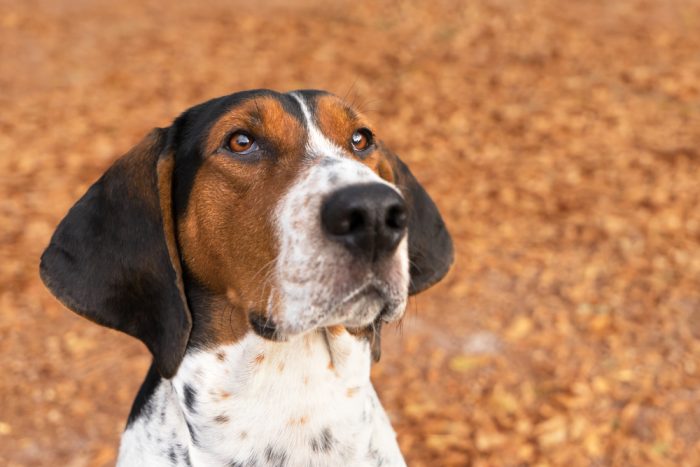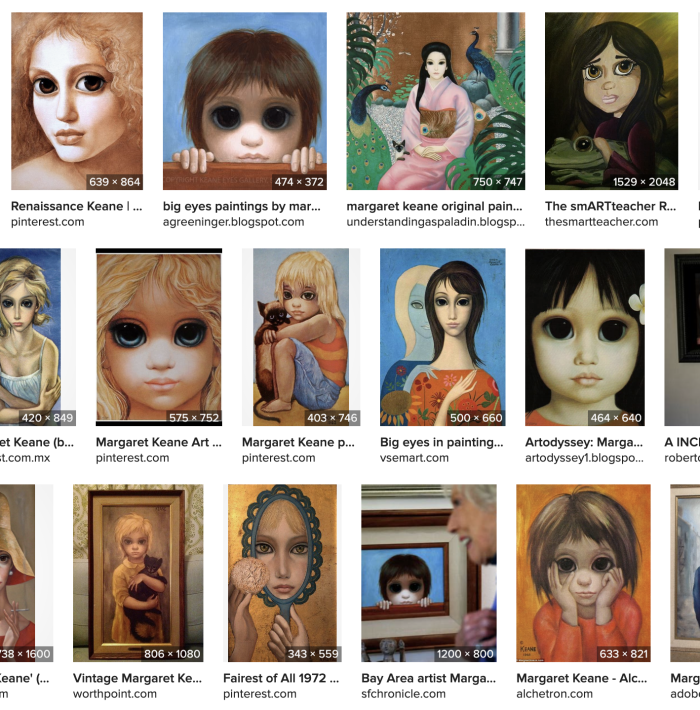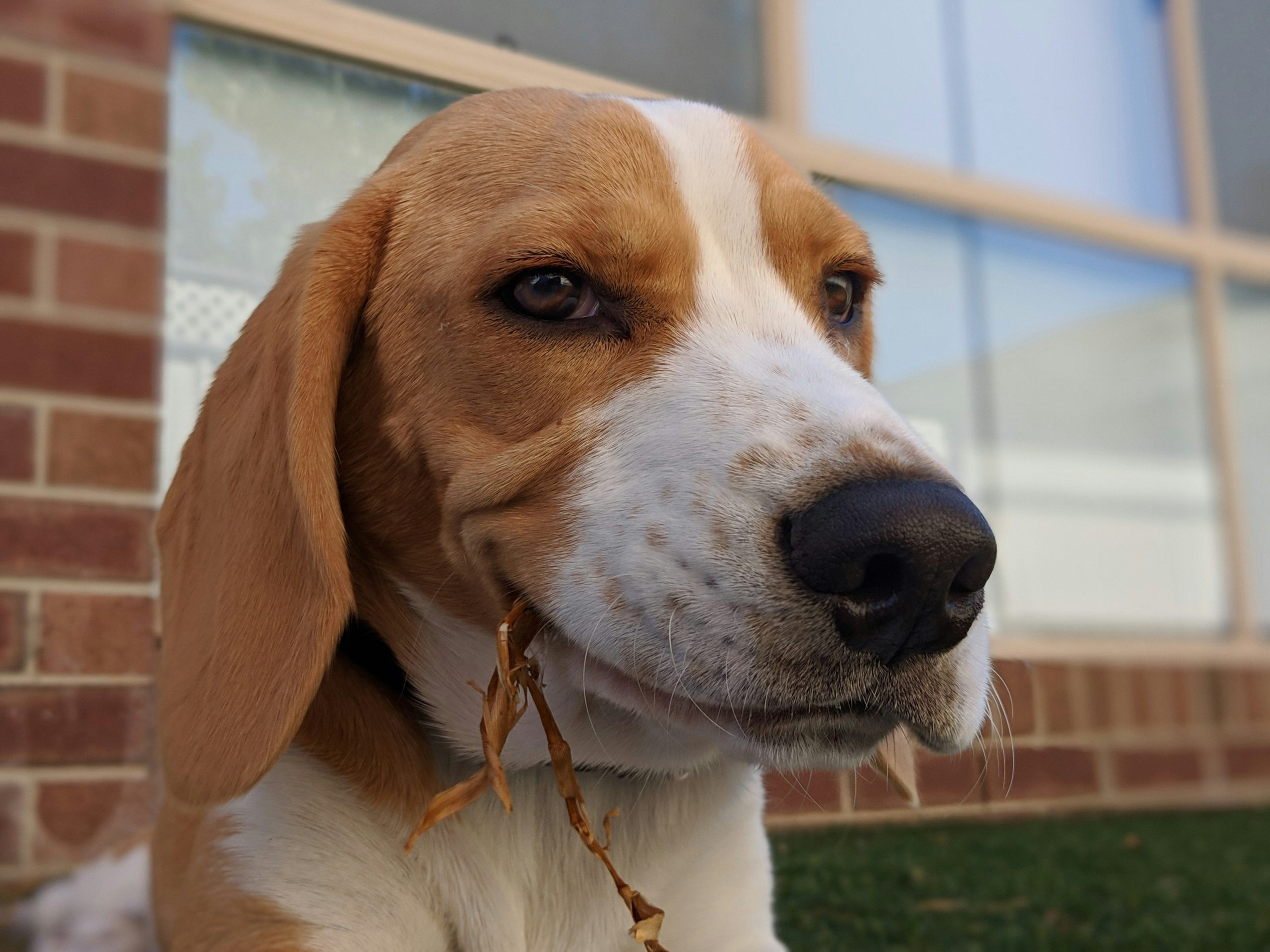
Meet Margaret.
Her art was criticized for being mawkish, cliched – and worse (for an artist) – formulaic. Others said her paintings were so sentimentally saccharine, it made their teeth hurt. Art critic, John Canaday, described her as a painter celebrated “for grinding out formula pictures of wide-eyed children of such appalling sentimentality that this product has become synonymous among critics definition of tasteless hack work.”
Ouch.
Margaret Keane’s art might never have achieved more than a modicum of success had she not married Walter Keane. For years, Walter, also an artist, claimed his wife’s work as his own, his threats, intimidations, and emotional manipulation compelling Margaret to stay silent about the fraud. Walter fooled many people, including the Bank of America which displayed one of her canvases in its Sausalito branch, but as his work, not her’s.
In 1965, Margaret left her lying cheat of a husband, and in 1970 on a radio broadcast, she revealed the truth: She had painted the wide-eyed characters on her canvases, not Walter. Below is a screenshot of some of her paintings:

The radio broadcast was a pivotal moment for Margaret as she reclaimed attribution for her artwork. It had to feel good, but probably not as satisfying as when she sued her now ex-husband in 1986. As part of the court proceedings, both Margaret and Walter were asked to paint in court to prove who was the real artist behind the big-eyed children paintings. Walter didn’t paint because of a “sore shoulder.” Margaret, however, whipped off one of her trademark renderings in 53 minutes in front of a judge and jury, and she was awarded $4 million in damages.
Margaret Keane didn’t get the $4 million judgement. Though the results of her suit were later upheld, the amount of damages was later reduced on appeal. Margaret said it wasn’t the money that made her pursue the legal battle, but to get her reputation back. Margaret’s situation, of course, made the news at the time, but when Tim Burton (director of Beetlejuice, Edward Scissorhands, and Corpse Bride among other films) filmed “Big Eyes” in 2014, Margaret’s story – and her depiction of pleading, saucer-eyed waifs, animals, and adults, reached an audience that had never heard of her. In 2022, Margaret died of heart failure at the age of 94.
Regular readers of these pages know by now that we’re going somewhere this that is related to purebred dogs, and they’re right!
We were reminded of Margaret Keane’s artwork when we read a breed standard for one of the coonhounds. In the section describing “expression,” we noticed the use of the word, “pleading,” and got curious. Were there other breeds that called for “pleading” eyes or expression?
Yes! And curiously, the word is used in the description of only five AKC breeds, and all of them are hounds:
Redbone Coonhound: Expression – Pleading;
Beagle: Eyes large, set well apart-soft and houndlike-expression gentle and pleading;
American Foxhound: Eyes large, set well apart, soft and houndlike-expression gentle and pleading;
Bluetick Coonhound: Expression is a typical pleading hound expression, never wild or cowering;
Treeing Walker Coonhound: Eyes – large, set well apart with soft hound-like expression, pleading and gentle;
“Pleading” is not a word we would associate with a working dog, and if ever there is a dog driven to work via scent or sight, it’s a hound. So why does the word “pleading” show up only in the standards of hound breeds?
If a reader has a definitive answer, we’d love to hear it, but for now, we offer our own speculation, and it comes in parts. Certainly “pleading” impacts type because it describes the desired expression for certain hounds. This expression is typically soft and warm, a look that melts hearts and makes it hard to say “no” to a dog.

Could you say no to this face?
Photo by PxHere
Still, we wonder why this expression is of value in a dog that hunts?
Perhaps it’s because historically, hounds have worked alongside humans to hunt and track, and a “pleading” expression emphasizes a dog’s willingness to please their owner. “Yes,” those eyes say. “I will work with you, I will pay attention to you, and I’m happy to do so.”
Mind you, the dog below may have other ideas:

Photo by Giollianosulit Sulit on Unsplash
Lightheartedness aside, we think the word “pleading” appears in the standards of hound breeds to reflect the breed’s strong bond with their person.
This isn’t to say that other breeds don’t form bonds with their owners, or want to work less enthusiastically, but other words, terms and phrases are used to describe expression in those breeds. In this post, we have focused on the word, “pleading.”
